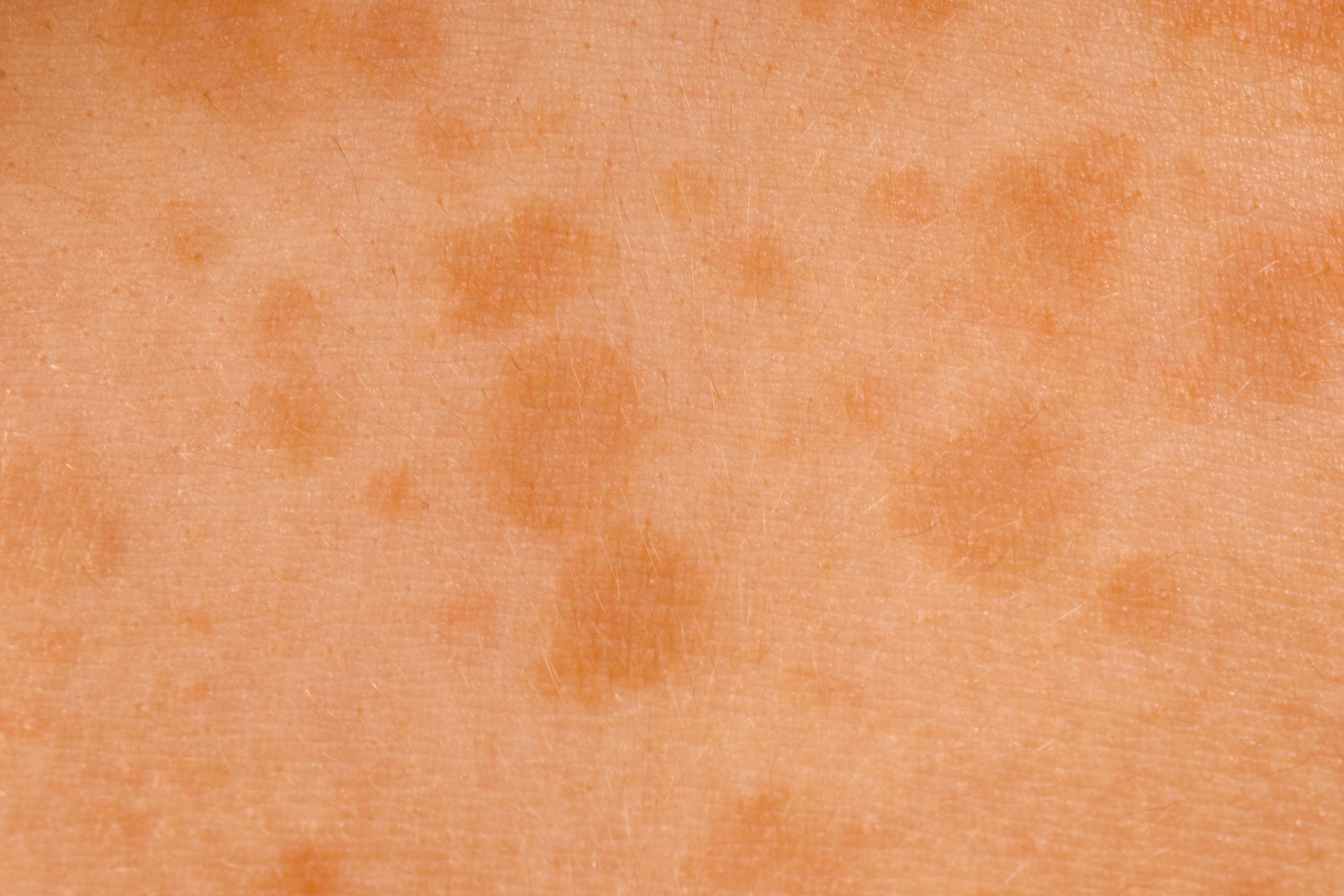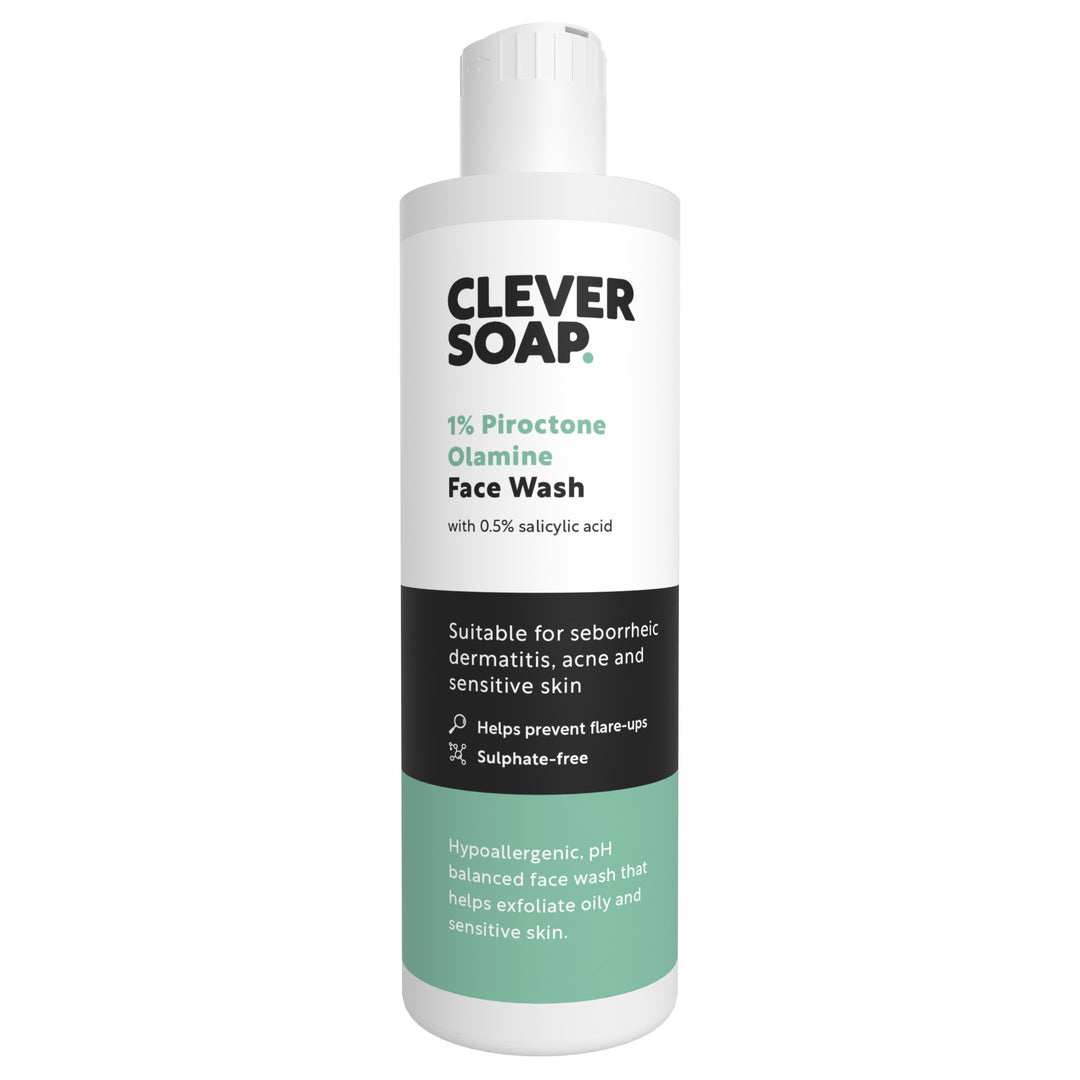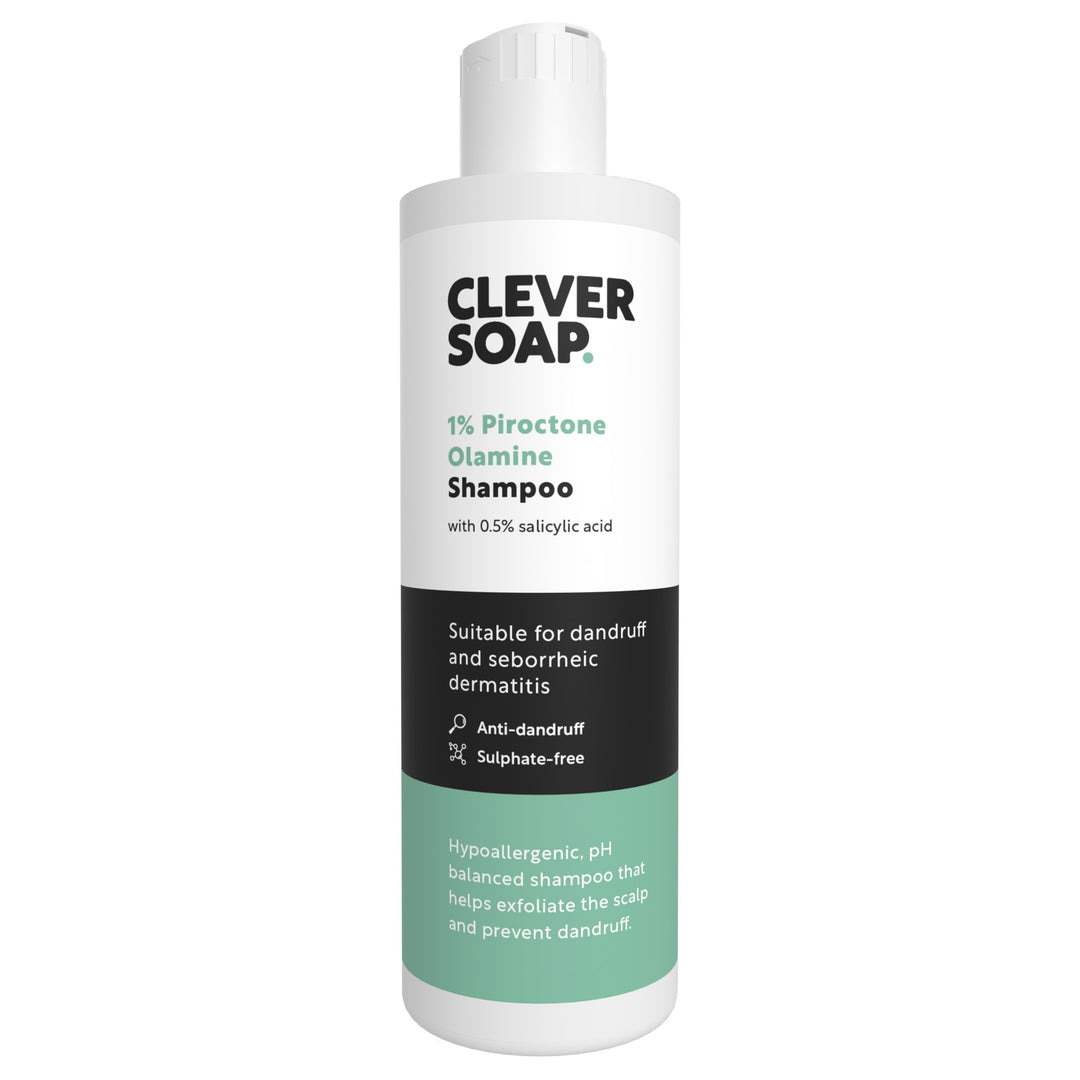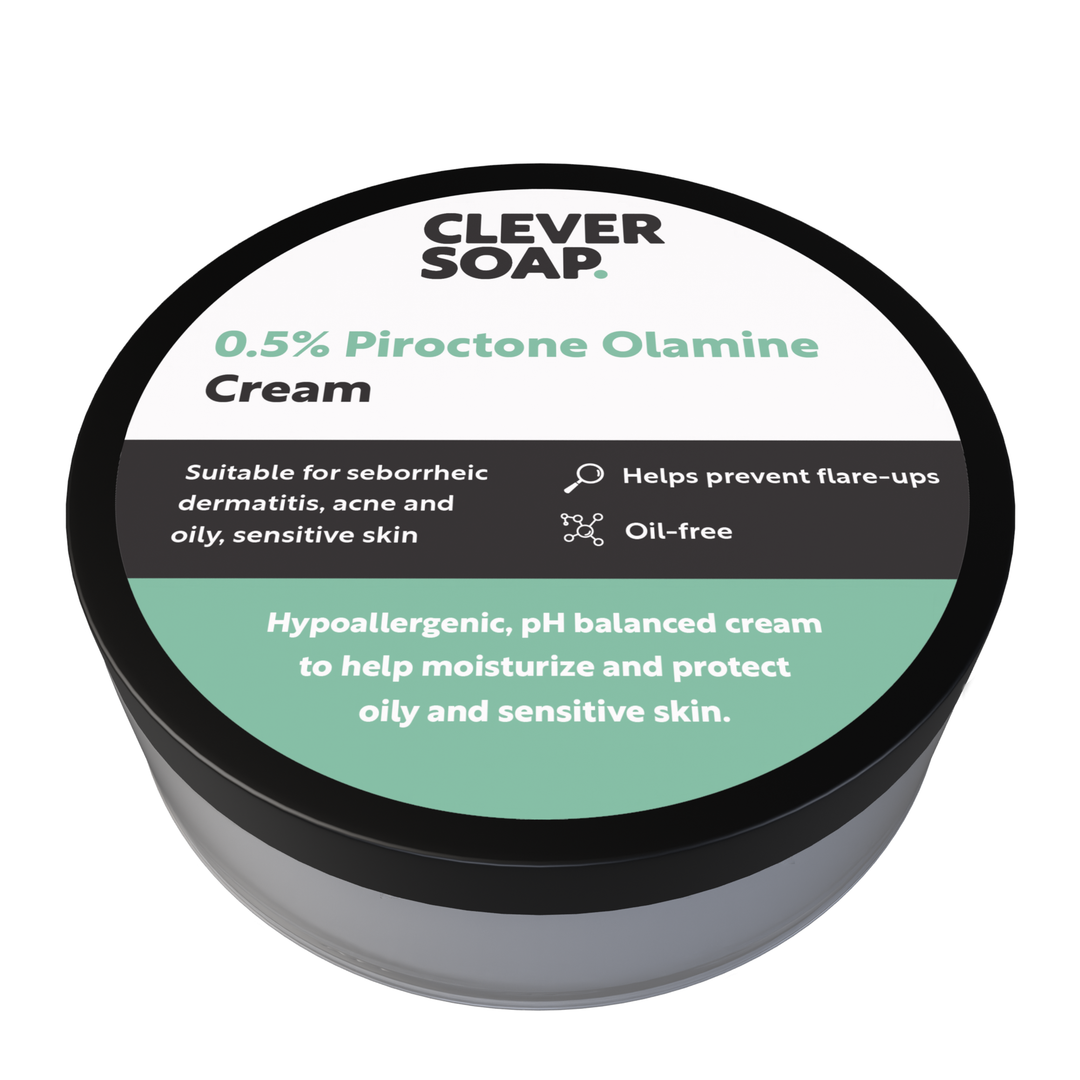U.K. DELIVERY £1.99, FREE FOR ORDERS OVER £25 | INTERNATIONAL DELIVERY FROM £9.99

Malassezia: What It Is, How It Affects Your Skin, and What You Can Do About It
Introduction
Malassezia is a naturally occurring yeast that lives on everyone’s skin. While it’s usually harmless, for some people it can cause or worsen a range of skin conditions, from dandruff and seborrheic dermatitis to fungal acne and eczema-like rashes. Understanding how Malassezia behaves is key to managing sensitive, oily, or acne-prone skin.
Malassezia-friendly Skincare Suitable For Seborrheic Dermatitis
Products in our green range are formulated without Malassezia-feeding ingredients, sulphates, or fragrances.
What Is Malassezia?
Malassezia is a genus of yeast-like fungi that naturally lives on the skin of humans and many animals. It is part of the skin’s normal microbiome, meaning it usually coexists peacefully with other microorganisms without causing harm. However, under certain conditions, Malassezia can overgrow, triggering a variety of inflammatory skin conditions.
Unlike bacteria or many other types of fungi, Malassezia is lipophilic, meaning it depends on lipids (fats and oils) for survival. It cannot survive on sugar or protein alone, which is why it thrives in oil-rich areas of the body like the scalp, face, upper chest, and back.
There are around 14 recognized species of Malassezia, but two species in particular, Malassezia globosa and Malassezia restricta, have been most strongly linked to skin issues such as seborrheic dermatitis, dandruff, and fungal acne.
How Malassezia Behaves on the Skin
In healthy skin, Malassezia helps maintain the skin’s microbial balance and may even play a role in defending against harmful pathogens. However, in the right environment where there could be excessive oil production, humidity, an impaired skin barrier, or immune system changes, Malassezia can multiply rapidly. As it digests fats, it releases by-products (such as oleic acid) that can irritate the skin, disrupt the skin barrier, and trigger inflammation.
This inflammatory response is thought to contribute to a range of skin conditions, especially those involving flaking, redness, itching, and clogged pores.
Skin Conditions Linked to Malassezia
When Malassezia grows out of balance, it can contribute to, or worsen, a range of skin issues. Here’s a closer look at some of the most common conditions associated with Malassezia:
Seborrheic Dermatitis
Seborrheic dermatitis is a chronic inflammatory skin disorder that causes red, scaly patches, oily skin, and stubborn dandruff. It often affects areas rich in oil glands, such as the scalp, eyebrows, nose, and chest.
Malassezia is believed to play a major role by breaking down skin oils into irritating fatty acids that trigger inflammation and disrupt the skin barrier. Managing seborrheic dermatitis usually involves using antifungal treatments and gentle skincare that reduces oil buildup without irritating the skin.
To learn more about seborrheic dermatitis, click here.
Dandruff
Dandruff is primarily found on the scalp. It presents as white or yellowish flakes, often accompanied by mild itching.
People with dandruff tend to have higher concentrations of Malassezia yeast on their scalp. Using anti-fungal shampoos (like those containing ketoconazole or piroctone olamine) can significantly reduce dandruff by controlling yeast growth.
We have a detailed guide on dandruff here.
Fungal Acne (Malassezia Folliculitis)
Unlike typical bacterial acne, fungal acne, technically called Malassezia folliculitis, is caused by an overgrowth of yeast within hair follicles. It typically presents as small, itchy, uniform-looking bumps, often on the forehead, cheeks, back, and chest. These breakouts can be mistaken for regular acne but don’t usually respond to traditional acne treatments.
Effective management focuses on anti-fungal skincare, avoiding occlusive products, and choosing “Malassezia-safe” ingredients that don’t feed the yeast.
Pityriasis Versicolor (Tinea Versicolor)
Pityriasis versicolor is a superficial fungal infection caused by Malassezia, resulting in discolored patches of skin, often lighter or darker than surrounding areas. These patches typically occur on the back, chest, neck, or arms and may become more noticeable after sun exposure.
The yeast interferes with melanin production in the skin, causing the color changes. Treatment usually involves topical anti-fungal creams or shampoos, though relapses are common in warm, humid environments.
To understand more about the symptoms and treatments of Tinea Versicolor, click here.
Atopic Dermatitis
In some cases, Malassezia has been found to worsen symptoms of atopic dermatitis (a form of eczema).
The yeast may trigger an immune response that intensifies redness, itching, and inflammation. While not the root cause of eczema, controlling Malassezia overgrowth can sometimes lead to noticeable improvement in symptoms, especially when combined with barrier-repairing skincare.
For more information on atopic dermatitis, click here.

How to Manage Malassezia-Related Skin Issues
The goal in managing Malassezia-triggered skin conditions is to control the yeast population and support the skin barrier. Here are some tips:
1. Choose Malassezia-Safe Skincare
Malassezia thrives on specific fatty acids and esters, typically those with carbon chain lengths between C11–C24. Avoid oils like coconut oil, olive oil, and heavy creams rich in these fats. Instead, opt for:
-
Light, non-comedogenic moisturizers
-
Skincare free from esters that feed yeast
-
Formulations with simple, anti-inflammatory ingredients
At Clever Soap, our green product range has been designed without Malassezia-feeding ingredients.
2. Use Anti-fungal Ingredients
Topical anti-fungals can help control Malassezia overgrowth. Look for products containing:
-
Ketoconazole
-
Climbazole
-
Zinc Pyrithione
-
Selenium Sulfide
3. Maintain a Balanced Skincare Routine
-
Cleanse gently without stripping natural oils too aggressively
-
Moisturize with safe, barrier-supporting ingredients
-
Protect your skin daily with a mineral sunscreen

Final Thoughts on Malassezia and Your Skin
Malassezia is a fascinating, and sometimes frustrating, part of your skin’s natural ecosystem. For most people, it causes no problems at all. However, when conditions allow this yeast to overgrow, it can trigger or worsen a wide range of skin issues, from dandruff and seborrheic dermatitis to fungal acne and other inflammatory conditions.
Managing Malassezia-related concerns starts with understanding how this yeast behaves. Because it thrives on certain oils and fatty acids, skincare products that would normally be considered healthy, like rich oils and heavy creams, can actually worsen symptoms for those sensitive to Malassezia. This is why choosing Malassezia-safe skincare, focusing on lightweight, non-comedogenic, and anti-fungal supporting ingredients, can make a significant difference.
It’s also important to approach treatment gently and consistently. Harsh cleansers, over-exfoliation, and aggressive treatments can compromise the skin’s natural barrier, making it easier for Malassezia to grow unchecked. A balanced routine that supports skin health while minimizing yeast-friendly conditions is the best long-term strategy.
If you’re struggling with persistent skin concerns like seborrheic dermatitis, fungal acne, or dandruff, it’s worth considering whether Malassezia could be a contributing factor. By adjusting your skincare routine and choosing the right products, you can work with your skin’s microbiome rather than against it, leading to calmer, clearer, healthier-looking skin.



